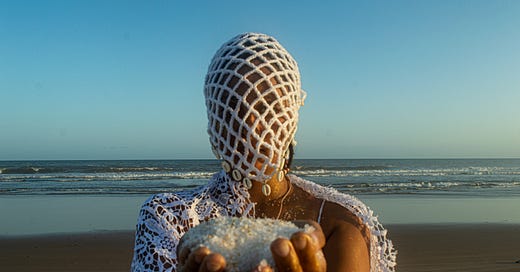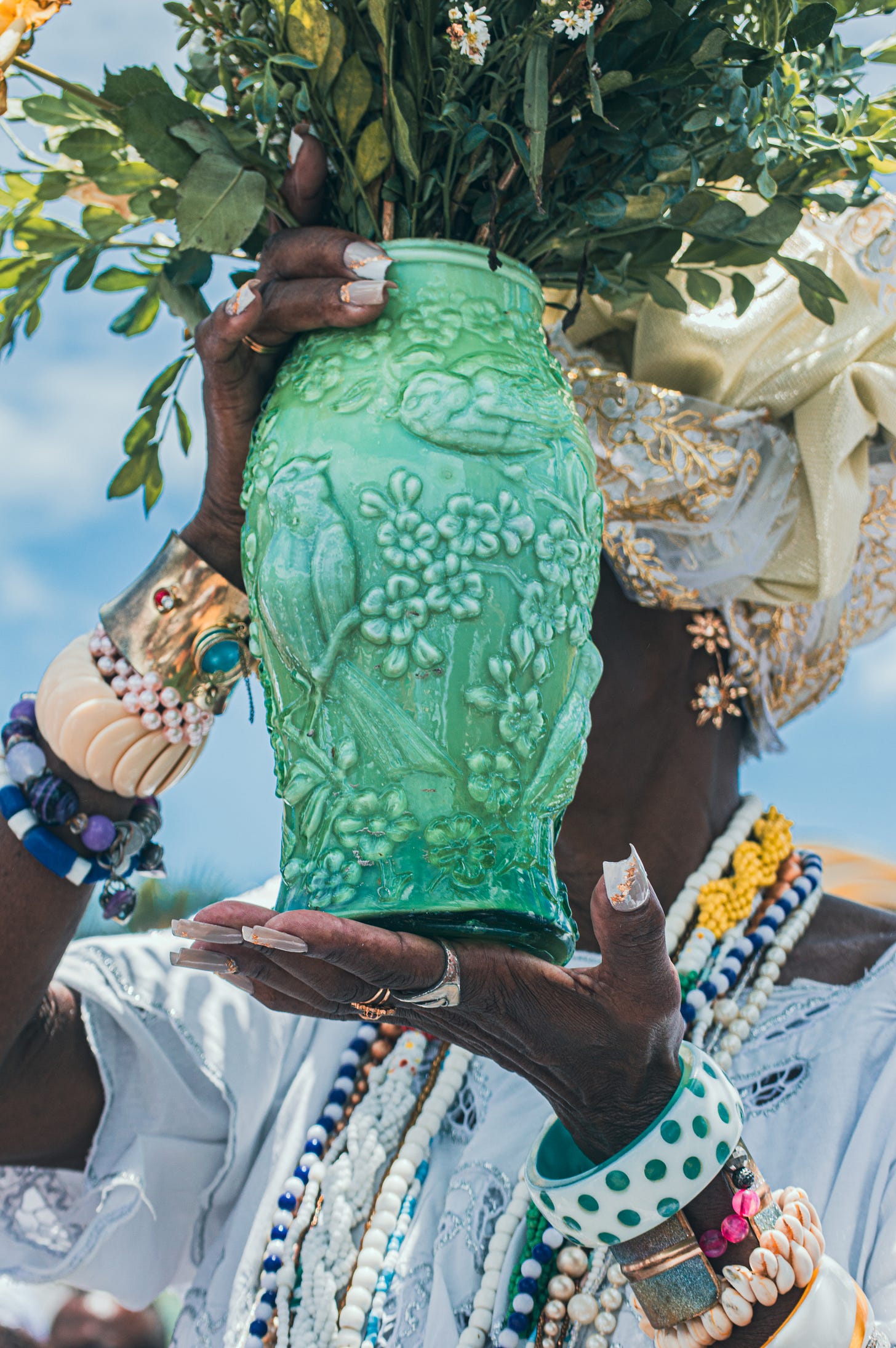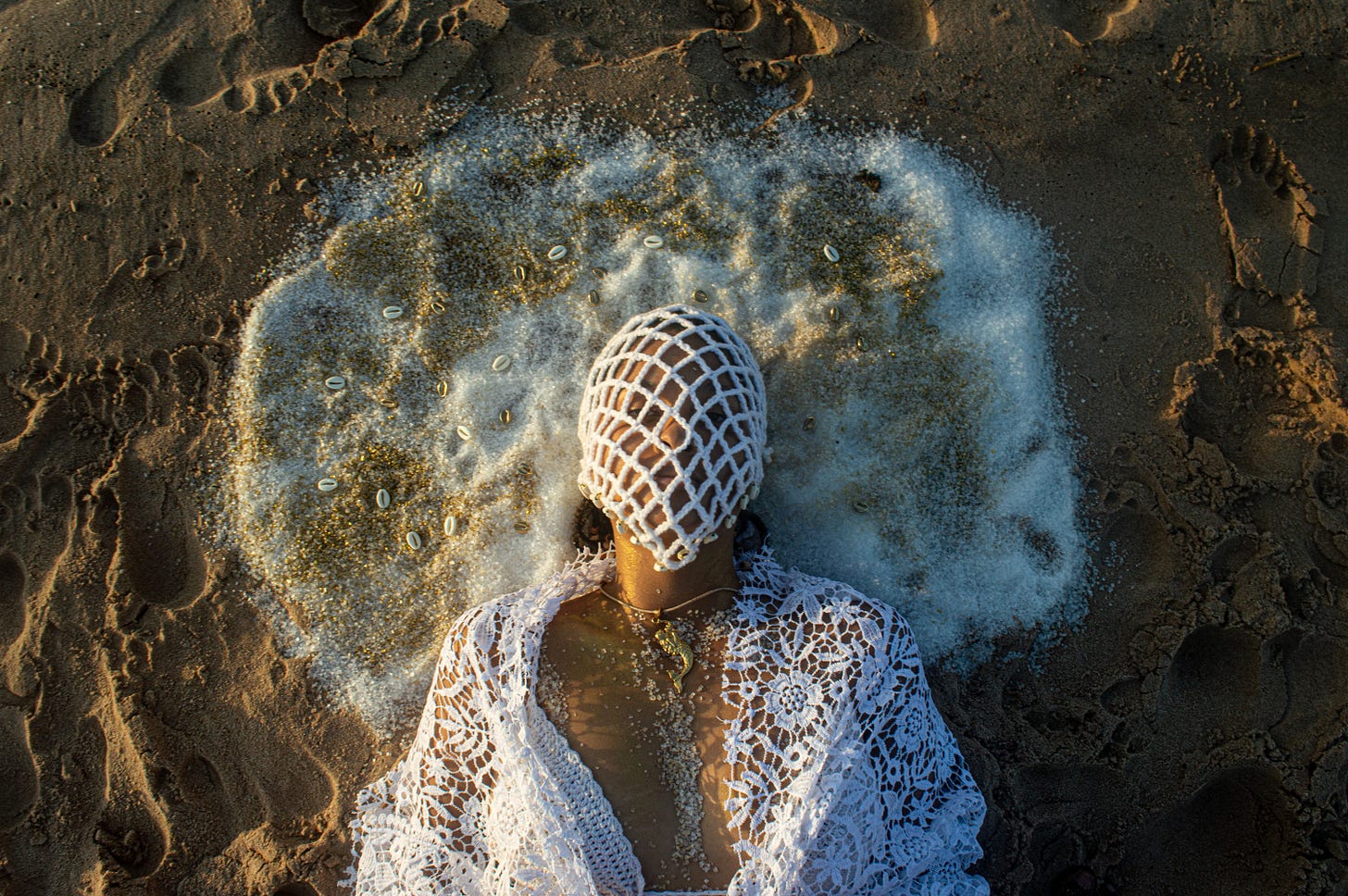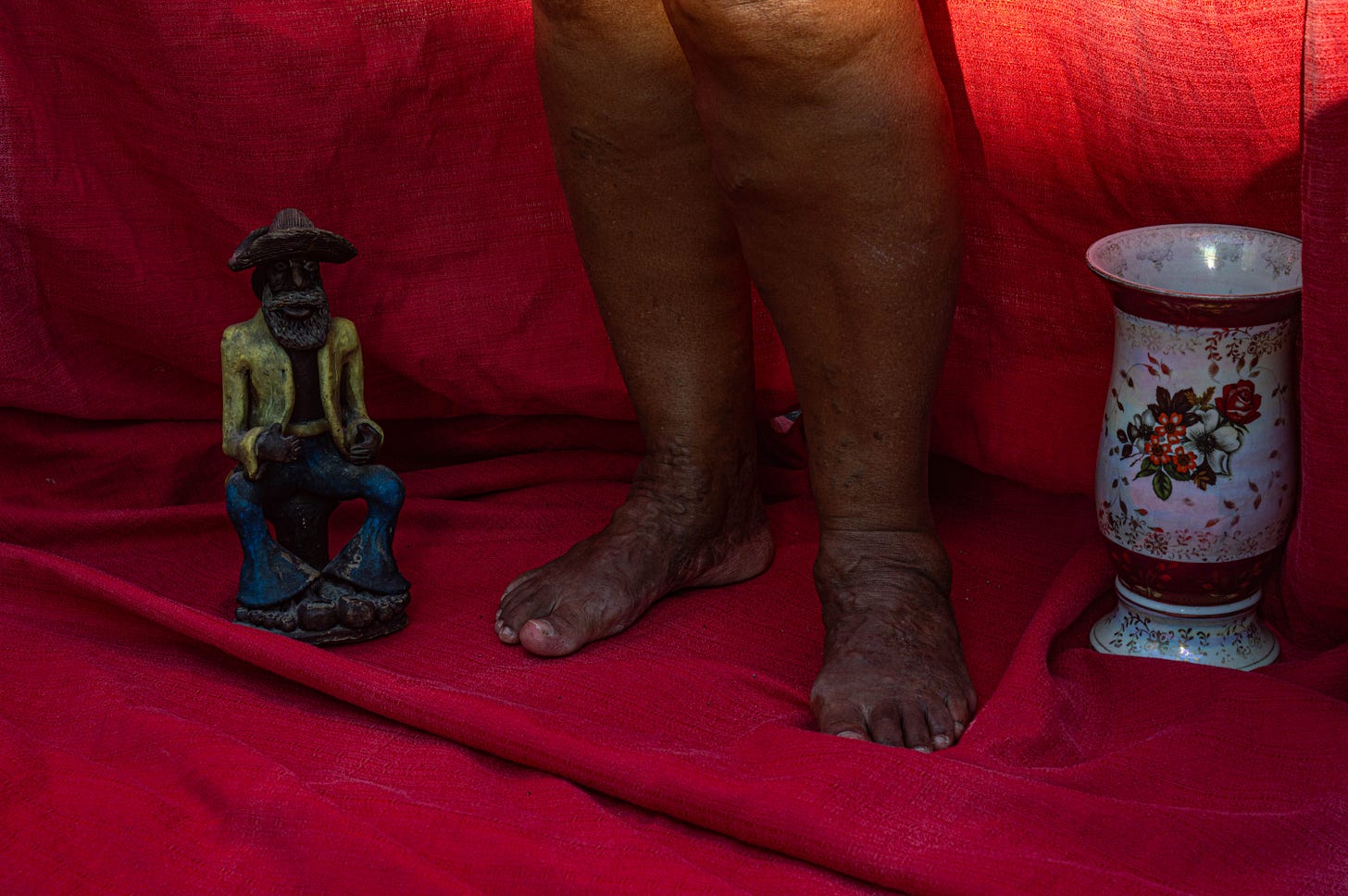There’s magic in Salvador. Lauded as the city with the largest population of Black people outside the African continent, its preservation of African cultural linkages and distinctly Black Brazilian political tradition has spurred a fascinating curiosity about the city. Artists from within and outside Brazil clamor to make a muse of it - whether for its romance, cultural cache, or symbolism. Every year, especially during festivals, outsiders flock to the city to gaze.
To quote Ansel Adams, “A photograph is usually looked at - seldom looked into.” Questions about the artist's relationship to the subject and the transmission of context to the audience is a preoccupation for the 23-year-old emerging photographer and historian, Cauan Ferreira Jesus Franco. Being from a community that is often a focal point of cultural production can breed a weariness about gazes.
“I take pictures of the festivals, sure, but what I care about is the before and after,” Franco asserts. His visual capsules of life in Salvador fluctuate between capturing the splendor of the sacred and showing the sublime in the mundane. It isn’t preoccupied with being palatable to outsiders or easily digestible in the mainstream.
The increasing boom in tourism to the area, coupled with the prominence of the attention economy, raises a poignant discussion about ethical consumption of Salvador’s culture. “People (outside photographers) parachute in, they take the shot, and they leave, but they don’t ask the names of the people they shoot, there’s no narrative,” he expounds. Franco’s concern is that natives of the city are not afforded the due respect of being considered actual subjects. “You have to ask them for consent and talk to them,” he says.
His sentiments echo a long history of erasure. As Afro-Brazilian and Indigenous cultural traditions and artifacts were appropriated to build Brazil’s cultural identity, they simultaneously drew both spectacle and ridicule, all while the people themselves were systematically dismissed to the background of Brazil’s society. Franco’s frustration is that in the Brazilian art world, “white photographers are making money off Black bodies,” using one-dimensional lenses, yet, they have the farthest reach.
Despite the obstacles, Franco has found opportunities to be challenged beyond the derivative. His first exhibition, O Sal que brilha e abençoa, shown at the Museu de Arte Moderna, was part of a larger thematic showing Confluências e Fabulações Líquidas. The theme was a reference to Afrobrazilian author and artist Denise Ferreira da Silva’s speculative immersive film, 4 Waters: Deep Implicancy, which grapples with questions around migration, morality, and colonization.
The show was curated by Afrotonizar, an experimental Afro-Brazilian and Indigenous artist collective spearheaded by Naymare Azevedo, and it featured the work of 16 residential artists. Intentionality is highly encouraged by Afrotonizar’s curriculum. Azevedo is particular about having the residents interrogate their artistic ideas and interrogate the world around them in a rigorous manner. The collective, as Azevedo put it, is “anticolonial, a space for experimentation, development, and exchange.”
For six weeks, the artists were tasked with contending with the metaphorical waters, working and reworking their pieces before they were showcased. “We had many classes to set expectations and explore the theme, and I picked salt water, ” Franco explains.
His photos featured an anthropomorphic characterization of salt itself, covered in a knotted mask laced with cowry shells. “Salt is a personality. Here, we are surrounded by the sea, so it’s normal to be in it. There are the little aspects of how it impacts you like the texture of our bodies when we leave the water, and there’s also this spiritual element because salt is an important element for life,” he declares.
Franco credits the experience with showing him there was space for the type of art he wanted to make. “It was reassuring to have the opportunity because Black photographers are not considered visual artists in the same way by the general public,” he says.
Post-exhibition, Franco has been working on pieces about memory and ancestry. His current ongoing project, O que esses pés contam, digs into these themes. He’s starting with the story of his family matriarch, his grandmother. “At 60, she went to university for a degree in museology at university. I’m inspired by her so I wanted to eternalize her through my lenses,” he says.
As a historian, Franco recognizes that the art we leave behind will tell our stories when we can’t. Ultimately, his photographs are a vessel, transmitting a dialogue between himself, his community, and their collective memory. It is why it matters so much that he learns about his subjects - it shapes the image and gives it integrity. He clarifies, “For a long time, our culture, our religion, were demonized. I’m not concerned with just the image. I want to teach kids our story isn't just about how someone else sees us.”








